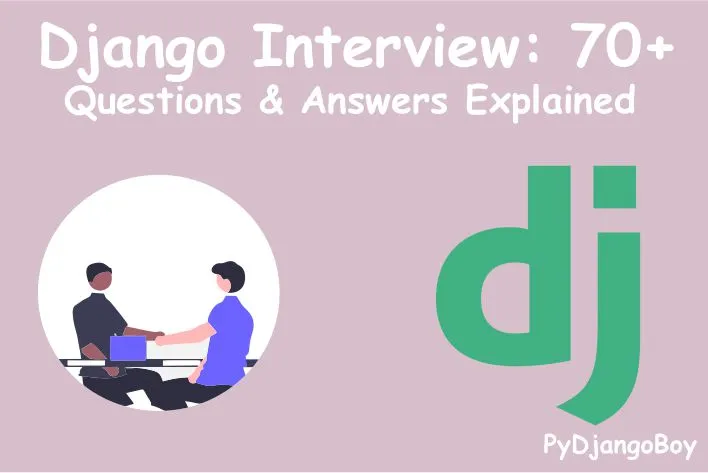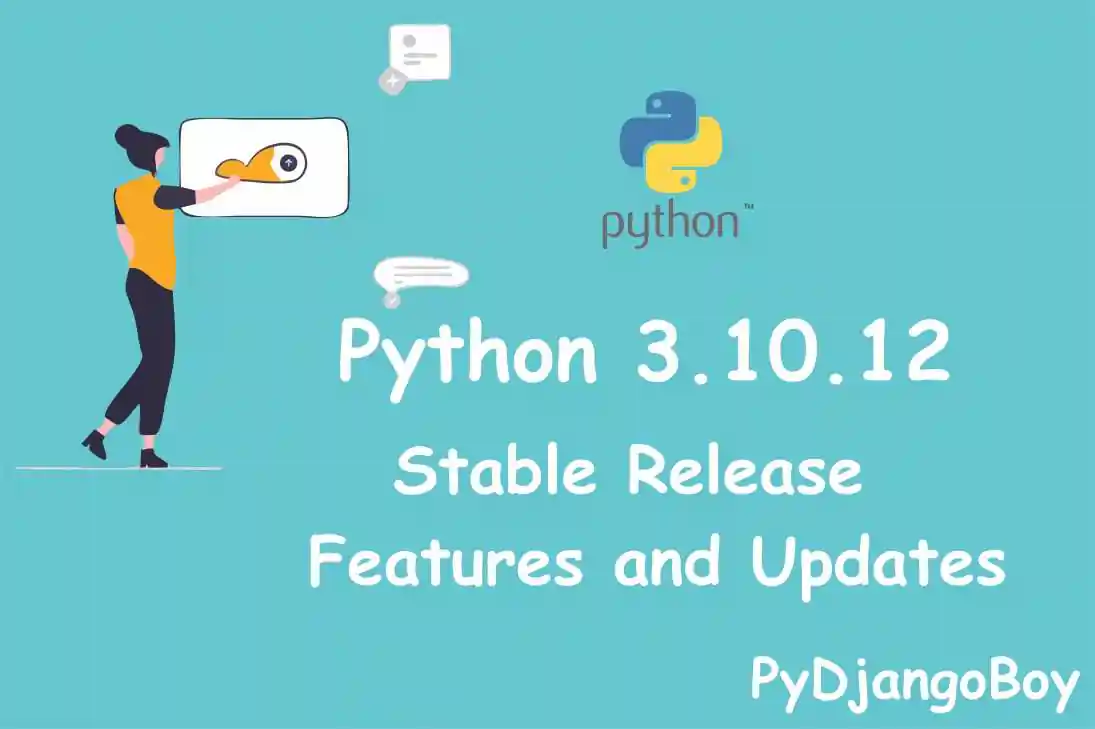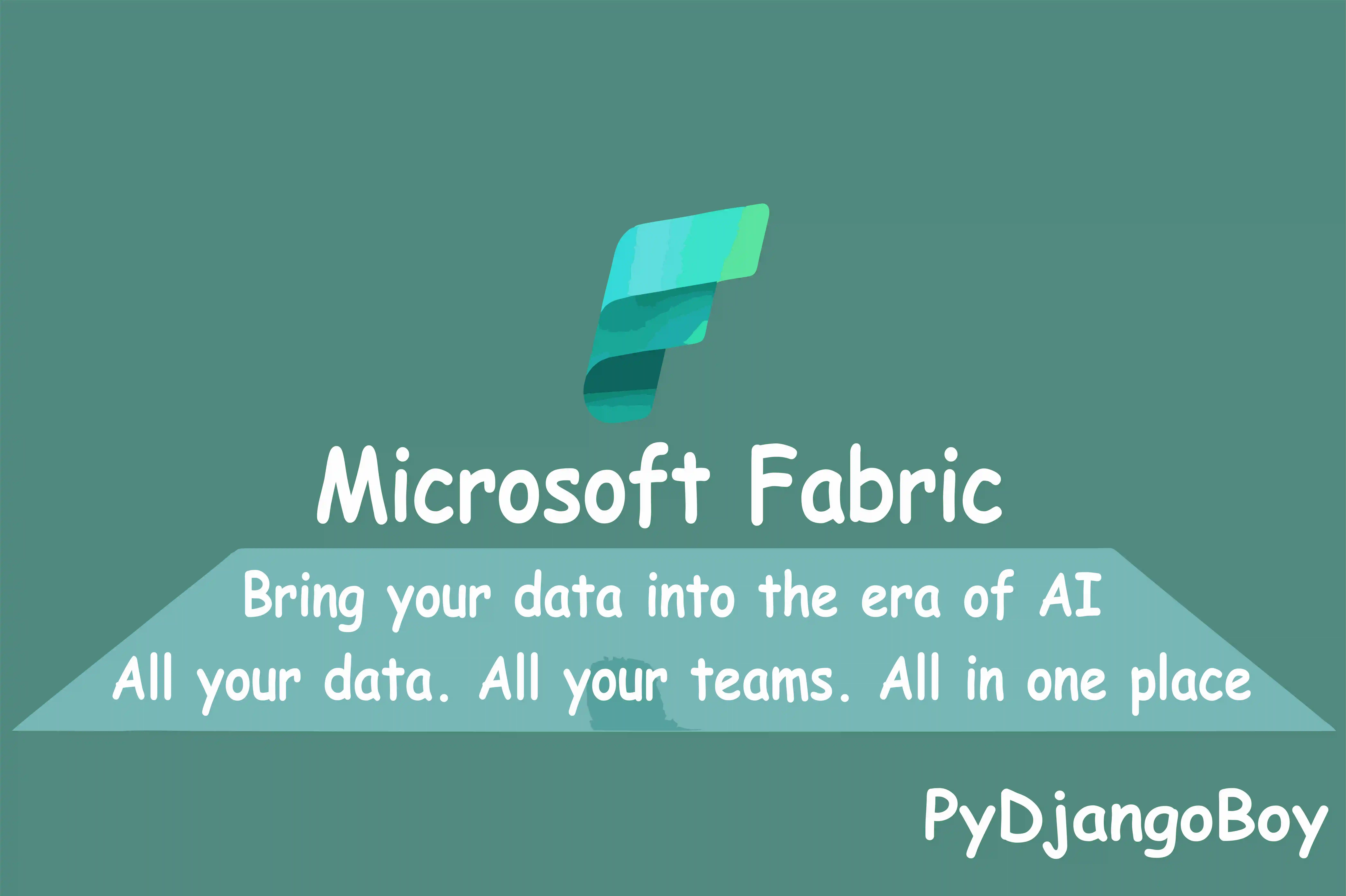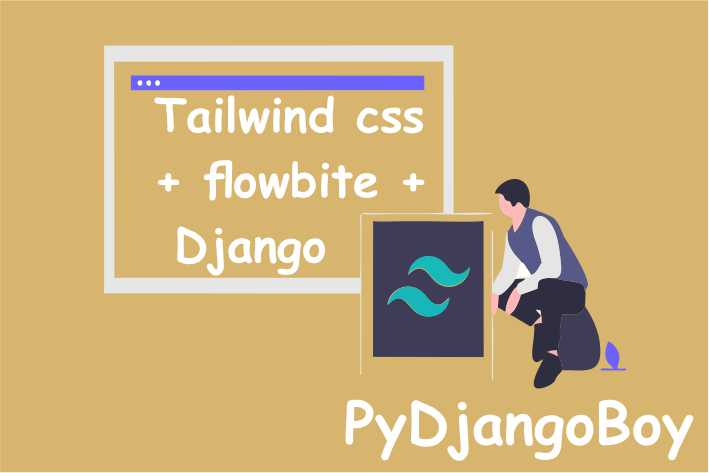Django Interview: 70+ Questions & Answers Explained
Django Interview: 70+ Q&A Simplified demystifies Django interviews. It's your key to mastering common and advanced questions, complete with concise answers, code snippets, and a dash of fun emojis. Level up your web development career today!

1. What is Django? 🐍
- Django is a high-level Python web framework that makes it easier to build web applications quickly and efficiently.
2. Explain MVC and how it relates to Django. 🏗️
- MVC stands for Model-View-Controller. In Django, it's implemented as Model-View-Template (MVT).
- Model represents the data, View handles the presentation, and Template defines the HTML structure.
3. What is a Django project? 📁
- A Django project is a collection of settings, configurations, and apps that make up a web application.
4. How do you create a new Django project? 🚀
- Use the command
django-admin startproject projectname.
5. What is a Django app? 📦
- A Django app is a self-contained module that performs a specific function within a project.
6. How do you create a new Django app? 📦
- Use the command
python manage.py startapp appname.
7. What is a Django URL pattern? 🔗
- URL patterns define how URLs map to views in Django.
8. How do you define a URL pattern in Django? 🌐
- By using the
url()function inurls.py.
from django.urls import path
from . import views
urlpatterns = [
path('example/', views.example_view, name='example'),
]
9. What is a Django view? 👀
- A view is a Python function that processes a web request and returns a response.
10. How do you create a view in Django? 📝 - Define a function in views.py.
from django.http import HttpResponse
def example_view(request):
return HttpResponse("Hello, Django!")
11. Explain Django ORM. 🗃️ - Django's Object-Relational Mapping (ORM) allows you to work with the database using Python objects.
12. How do you define a model in Django? 🧱 - Define a Python class that inherits from models.Model.
from django.db import models
class Product(models.Model):
name = models.CharField(max_length=100)
price = models.DecimalField(max_digits=5, decimal_places=2)
13. What is a migration in Django? 🧳 - A migration is a script that manages changes to the database schema.
14. How do you create and apply migrations? 🧰 - Use python manage.py makemigrations to create migrations. - Use python manage.py migrate to apply migrations.
15. Explain Django admin. 🛡️ - Django admin is an automatic admin interface generated based on your models.
16. How do you register a model with the Django admin? 📋 - Define an admin class in admin.py and use admin.site.register().
from django.contrib import admin
from .models import Product
@admin.register(Product)
class ProductAdmin(admin.ModelAdmin):
list_display = ('name', 'price')
17. What is a Django template? 📄 - A template is an HTML file with placeholders for dynamic content.
18. How do you render a template in Django? 🎨 - Use render() function in views.
from django.shortcuts import render
def example_view(request):
return render(request, 'example.html', {'name': 'Django'})
19. Explain Django forms. 📝 - Django forms help in creating and handling HTML forms in a Pythonic way.
20. How do you create a form in Django? 📝 - Define a form class that inherits from forms.Form or forms.ModelForm.
from django import forms
class ProductForm(forms.ModelForm):
class Meta:
model = Product
fields = ['name', 'price']
21. What is Django Middleware? 🍪
- Middleware is a way to process requests and responses globally before they reach views or after they leave views.
22. Give an example of Django Middleware. 🍪
django.middleware.security.SecurityMiddlewarehelps secure your application by setting security-related HTTP headers.
23. Explain Django authentication. 🔑
- Django provides built-in authentication to manage user accounts and permissions.
24. How do you create a user in Django? 🔑
- Use
User.objects.create_user()or the built-in registration views.
from django.contrib.auth.models import User
user = User.objects.create_user(username='user1', password='password')
25. What is Django REST framework? 🌐
- Django REST framework is a powerful and flexible toolkit for building Web APIs.
26. How do you create a Django REST framework serializer? 🧵
- Define a serializer class that inherits from
serializers.Serializer.
from rest_framework import serializers
class ProductSerializer(serializers.Serializer):
name = serializers.CharField(max_length=100)
price = serializers.DecimalField(max_digits=5, decimal_places=2)
27. What is a Django queryset? 🧩
- A queryset is a database query expressed in Python.
28. How do you filter data using a queryset? 🔍
- Use the
filter()method.
products = Product.objects.filter(price__gte=10)
29. Explain Django migrations. 🧳
- Migrations allow you to evolve your database schema over time.
30. How do you create a superuser in Django? 🦸
- Use
python manage.py createsuperusercommand.
31. What is Django's ORM Lazy Loading? 🐢
- Lazy loading loads related objects only when they are accessed.
32. How do you add a foreign key relationship in a Django model? 🧱
- Use
models.ForeignKey.
from django.db import models
class Order(models.Model):
product = models.ForeignKey(Product, on_delete=models.CASCADE)
33. What is Django's session framework? 🕒
- Sessions allow you to store user data across requests.
34. Explain Django's CSRF protection. 🛡️
- Cross-Site Request Forgery protection prevents malicious form submissions.
35. How do you use Django's built-in caching system? 🚀
- Configure caching in settings and use the
cachemodule.
from django.core.cache import cache
# To set a value
cache.set('my_key', 'my_value', 600)
# To get a value
value = cache.get('my_key')
36. What are Django signals? 📡
- Signals allow certain senders to notify a set of receivers that some action has taken place.
37. Explain Django's static files handling. 📂
- Django provides tools for managing static files like CSS, JS, and images.
38. How do you serve static files in development? 🌐
- Use
django.contrib.staticfilesapp and{% load static %}template tag.
<link rel="stylesheet" type="text/css" href="{% static 'style.css' %}">
39. What is Django's middleware for authentication? 🔒
AuthenticationMiddlewareadds theuserattribute to request objects.
40. How do you create a custom user model in Django? 🔑
- Create a model that inherits from
AbstractBaseUserandPermissionsMixin.
from django.contrib.auth.models import AbstractBaseUser, BaseUserManager, PermissionsMixin
class CustomUserManager(BaseUserManager):
# ...
class CustomUser(AbstractBaseUser, PermissionsMixin):
# ...
41. What is Django's middleware for CSRF protection? 🛡️
CsrfViewMiddlewareadds CSRF protection to your forms.
42. Explain Django's request and response objects. 📥📤
HttpRequestrepresents incoming HTTP requests.HttpResponserepresents outgoing HTTP responses.
43. How do you create a JSON response in Django? 📦
- Use
JsonResponsefromdjango.http.
from django.http import JsonResponse
data = {'message': 'Hello, JSON!'}
return JsonResponse(data)
44. What is Django's template inheritance? 🧬
- Template inheritance allows you to create a base template and extend it in child templates.
45. Give an example of template inheritance in Django. 🧬
- Create a base template (e.g.,
base.html) with common structure.
<!DOCTYPE html>
<html>
<head>
<title>{% block title %}My Site{% endblock %}</title>
</head>
<body>
<div id="content">
{% block content %}{% endblock %}
</div>
</body>
</html>
- Create a child template (e.g.,
child.html) that extends the base template.
{% extends "base.html" %}
{% block title %}My Page{% endblock %}
{% block content %}
<h1>Welcome to My Page</h1>
{% endblock %}
46. What is Django's middleware for GZip compression? 📦
GZipMiddlewarecompresses content for faster transmission.
47. Explain Django's file uploads handling. 📁
- Django provides the
FileFieldandImageFieldfor handling file uploads.
48. How do you create a custom template tag in Django? 🏷️
- Define a Python function and register it using
@register.simple_tagdecorator.
from django.template import Library
register = Library()
@register.simple_tag
def current_time(format_string):
return datetime.datetime.now().strftime(format_string)
49. What is Django's authentication backend? 🔑
- Authentication backends allow custom authentication methods.
50. Explain Django's testing framework. 🧪
- Django provides a test runner and various testing tools for writing and running tests.
51. How do you write a unit test in Django? 🧪
- Create a test class that inherits from
django.test.TestCase.
from django.test import TestCase
class MyTestCase(TestCase):
def test_something(self):
# Write your test code here
52. What is Django's @login_required decorator? 🔒
@login_requireddecorator ensures that only authenticated users can access a view.
from django.contrib.auth.decorators import login_required
@login_required
def secure_view(request):
return HttpResponse("This view is secure!")
53. What is Django's context processors? 🧳
- Context processors add data to the template context for every request.
54. How do you create a custom context processor in Django? 🎁
- Define a Python function and add it to the
context_processorslist in settings.
def custom_context(request):
return {'custom_data': 'Hello, context!'}
55. Explain Django's Class-Based Views (CBVs). 📚
- CBVs are views defined as classes, providing reusable components for views.
56. Give an example of a Django Class-Based View. 📚
- Create a view class that inherits from a built-in CBV.
from django.views.generic import ListView
from .models import Product
class ProductListView(ListView):
model = Product
template_name = 'product_list.html'
context_object_name = 'products'
57. What is Django's reverse URL resolution? ↩️
- Reverse URL resolution allows you to generate URLs for views based on their names.
58. How do you reverse a URL in Django? ↩️
- Use the
reverse()function.
from django.urls import reverse
url = reverse('example')
59. Explain Django's request/response middleware. 🍪
- Request and response middleware process incoming and outgoing data for each request/response.
60. What is Django's get_object_or_404 shortcut? 🕵️
get_object_or_404()fetches an object from the database or raises a 404 error if it doesn't exist.
from django.shortcuts import get_object_or_404
product = get_object_or_404(Product, pk=1)
61. What is Django's Q object for queries? 🧩
- The
Qobject allows you to perform complex queries using logical operators.
from django.db.models import Q
result = Product.objects.filter(Q(price__lte=10) | Q(name__icontains='cheap'))
62. Explain Django's database transactions. 💼
- Database transactions ensure the integrity of data by making a series of database operations atomic.
63. How do you use transactions in Django? 💼
- Use the
transaction.atomic()decorator orwithstatement.
from django.db import transaction
@transaction.atomic
def my_view(request):
# Database operations here
64. What is Django's get() method for querysets? 🔍
- The
get()method retrieves a single object from the database that matches the query.
product = Product.objects.get(name='Example Product')
65. What is Django's annotate() method for querysets? 🔍
- The
annotate()method adds aggregated values to queryset objects.
from django.db.models import Count
categories = Category.objects.annotate(product_count=Count('product'))
66. Explain Django's CSRF token. 🛡️
- A CSRF token is a unique token that prevents Cross-Site Request Forgery attacks.
67. How do you include a CSRF token in a Django form? 🛡️
- Use
{% csrf_token %}template tag.
<form method="POST">
{% csrf_token %}
<!-- Form fields here -->
</form>
68. What is Django's middleware for authentication? 🔑
AuthenticationMiddlewareadds theuserattribute to request objects.
69. How do you include external CSS and JavaScript files in Django templates? 📦
- Use the
statictemplate tag.
<link rel="stylesheet" type="text/css" href="{% static 'style.css' %}">
<script src="{% static 'script.js' %}"></script>
70. Explain Django's database routing. 🗺️
- Database routing allows you to specify which database a model should use.
71. How do you use database routing in Django? 🗺️
- Define a custom database router class and specify it in settings.
**
- What is Django's
prefetch_related()method for querysets? 🔍**
prefetch_related()retrieves related objects efficiently to reduce database queries.
73. How do you create a custom template filter in Django? 🧹
- Define a Python function and register it using
@register.filter.
from django.template import Library
register = Library()
@register.filter
def my_filter(value):
# Filter logic here
74. Explain Django's middleware for language translation. 🌐
LocaleMiddlewarehandles language selection and translation.
75. How do you set up internationalization (i18n) in Django? 🌍
- Configure
LOCALE_PATHSand use{% trans %}template tags for translation.
# settings.py
LOCALE_PATHS = [
os.path.join(BASE_DIR, 'locale'),
]
# template.html
{% load i18n %}
<p>{% trans "Hello, World!" %}</p>
76. What is Django's select_related() method for querysets? 🔍
select_related()retrieves related objects using SQL joins to optimize database queries.
77. How do you use Django's messages framework for notifications? 💌
- Use
messages.add_message()to add messages and{% messages %}template tag to display them.
from django.contrib import messages
messages.add_message(request, messages.SUCCESS, 'Success message.')
78. Explain Django's middleware for content type negotiation. 📃
ContentNegotiationMiddlewarehandles content negotiation based on request headers.
79. What is Django's cache framework for caching? 🚀
- Django provides a simple API for caching.
80. How do you cache data in Django? 🚀
- Use the
cachemodule.
from django.core.cache import cache
# To set a value
cache.set('my_key', 'my_value', 600)
# To get a value
value = cache.get('my_key')
81. Explain Django's database indexes. 📈
- Indexes are database structures that improve query performance.
82. How do you create an index on a Django model field? 📈
- Use the
db_indexattribute in the model field.
class Product(models.Model):
name = models.CharField(max_length=100, db_index=True)
83. What is Django's values() method for querysets? 🔍
values()retrieves a dictionary of field values for each object in the queryset.
products = Product.objects.values('name', 'price')
84. Explain Django's middleware for security headers. 🛡️
SecurityMiddlewareadds security-related HTTP headers to responses.
85. How do you send email in Django? 📧
- Configure email settings and use
send_mail()fromdjango.core.mail.
from django.core.mail import send_mail
send_mail('Subject', 'Message', 'from@example.com', ['to@example.com'], fail_silently=False)
86. What is Django's exclude() method for querysets? 🔍
exclude()filters out objects that match the query.
products = Product.objects.exclude(price__gte=10)
87. Explain Django's middleware for X-Content-Type-Options. 📦
XContentMiddlewareadds theX-Content-Type-Optionsheader to responses.
88. What is Django's values_list() method for querysets? 🔍
values_list()retrieves a list of field values for each object in the queryset.
names = Product.objects.values_list('name', flat=True)
89. How do you customize Django admin? 🛡️
- Create custom admin classes for models and use the
admin.site.register()method.
90. What is Django's exists() method for querysets? 🔍
exists()checks if the queryset contains any results.
if Product.objects.filter(name='Example Product').exists():
# Product exists
91. Explain Django's middleware for XSS protection. 🛡️
XssProtectionMiddlewareadds theX-XSS-Protectionheader to responses.
92. How do you paginate a queryset in Django? 📜
- Use the
Paginatorclass to paginate a queryset.
from django.core.paginator import Paginator
paginator = Paginator(queryset, per_page)
93. What is Django's values() method for querysets? 🔍
values()retrieves a dictionary of field values for each object in the queryset.
data = Product.objects.values('name', 'price')
94. How do you handle form validation in Django? 📝
- Use Django's form classes, and check
is_valid()method.
if form.is_valid():
# Process form data
95. What is Django's annotate() method for querysets? 🔍
annotate()adds aggregated values to queryset objects.
from django.db.models import Count
categories = Category.objects.annotate(product_count=Count('product'))
96. Explain Django's middleware for clickjacking protection. 🛡️
XFrameOptionsMiddlewareadds theX-Frame-Optionsheader to responses.
97. How do you handle database transactions in Django? 💼
- Use the
transaction.atomic()decorator orwithstatement.
from django.db import transaction
@transaction.atomic
def my_view(request):
# Database operations here
98. What is Django's get_or_create() method for querysets? 🔍
get_or_create()gets an object or creates it if it doesn't exist.
obj, created = Product.objects.get_or_create(name='Example Product', price=20)
99. How do you use Django's values_list() method for querysets? 🔍
values_list()retrieves a list of field values for each object in the queryset.
names = Product.objects.values_list('name', flat=True)
100. Explain Django's middleware for HSTS. 🛡️ - StrictTransportSecurityMiddleware adds the Strict-Transport-Security header to responses.
101. What is Django's only() method for querysets? 🔍 - only() retrieves a limited set of fields for each object in the queryset.
fields = Product.objects.only('name', 'price')
These additional Django interview questions should help you prepare for your interview. 😊🎓
Here are some valuable resources for Django documentation, downloads, and recommended books:
Django Official Documentation:
- Django's official documentation is an excellent place to start. It provides comprehensive information and examples for developers of all levels.
- Documentation Link: Django Official Documentation
Django Downloads:
- You can download Django from the official website or use pip to install it.
- Official Download Page: Django Download
Recommended Django Books:
"Django for Beginners" by William S. Vincent:
- This book is perfect for beginners and covers the basics of Django, including building a blog application.
- Read Online
- Purchase on Amazon
"Django for APIs" by William S. Vincent:
- This book focuses on building web APIs using Django and Django REST framework.
- Read Online
- Purchase on Amazon
"Two Scoops of Django" by Daniel Roy Greenfeld and Audrey Roy Greenfeld:
- This is a highly regarded book for intermediate to advanced Django developers. It offers best practices and in-depth knowledge.
- Purchase on Amazon
"Django Design Patterns and Best Practices" by Arun Ravindran:
- This book explores advanced topics and design patterns in Django development.
- Purchase on Amazon
"High Performance Django" by Peter Baumgartner and Yann Malet:
- If you're interested in optimizing Django applications for performance, this book is a valuable resource.
- Purchase on Amazon
"Test-Driven Development with Python" by Harry J.W. Percival:
- While not exclusively about Django, this book teaches Django development through the lens of Test-Driven Development (TDD).
- Read Online
- Purchase on Amazon

DigitalOcean Sign Up : If you don't have a DigitalOcean account yet, you can sign up using the link below and receive $200 credit for 60 days to get started: Start your free trial with a $200 credit for 60 days link below: Get $200 free credit on DigitalOcean ( Note: This is a referral link, meaning both you and I will get credit.)
Latest From PyDjangoBoy
👩💻🔍 Explore Python, Django, Django-Rest, PySpark, web 🌐 & big data 📊. Enjoy coding! 🚀📚








